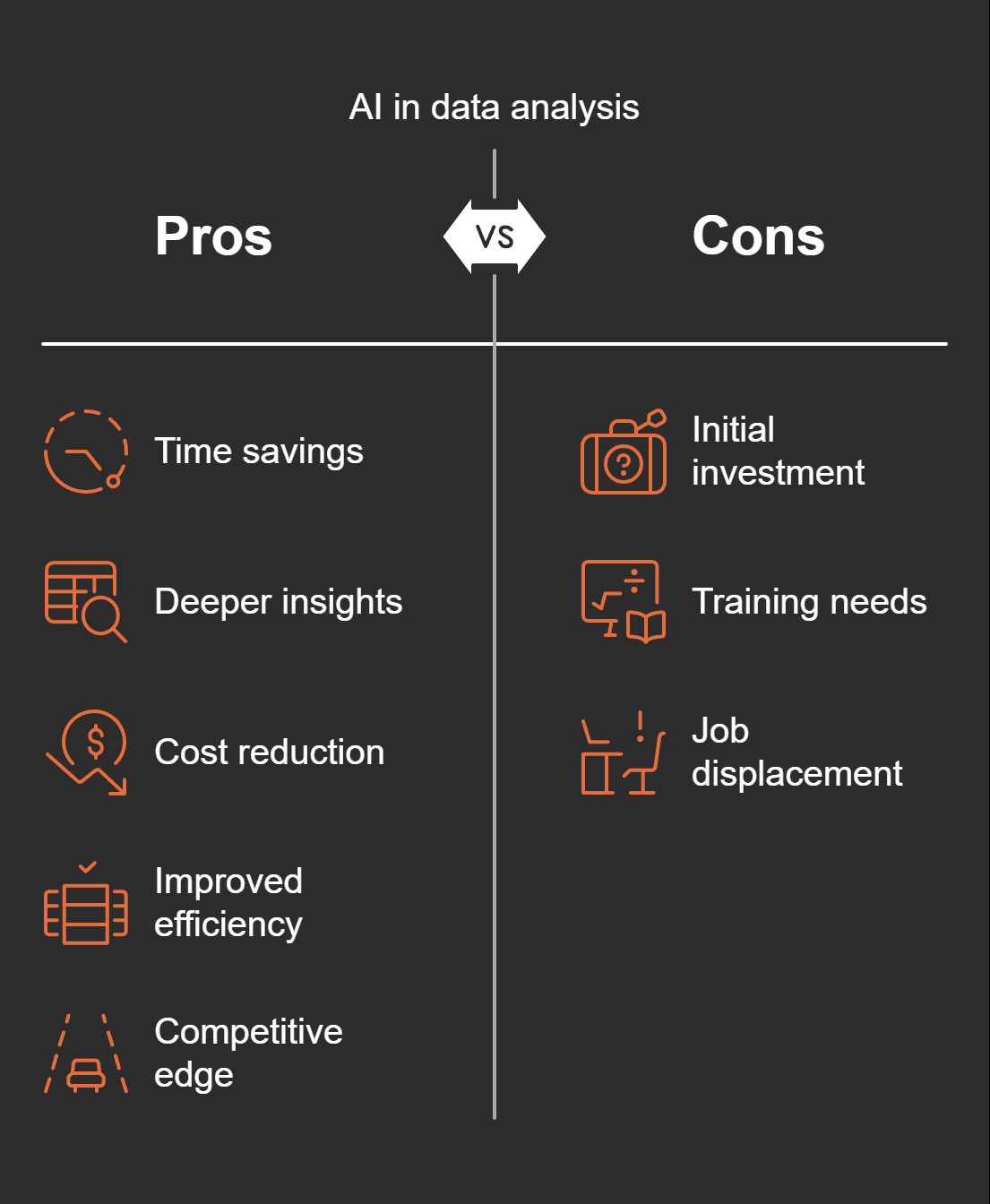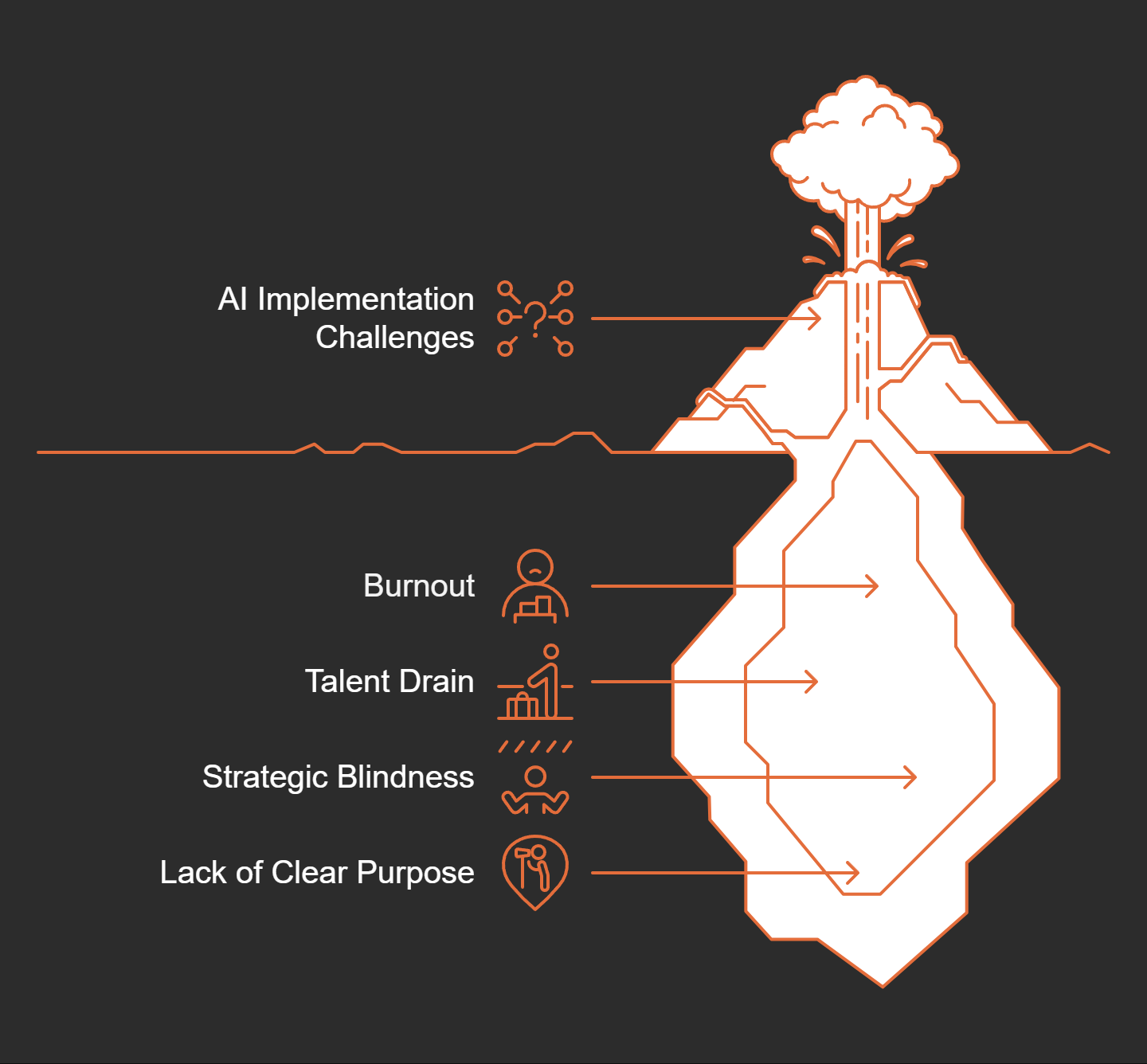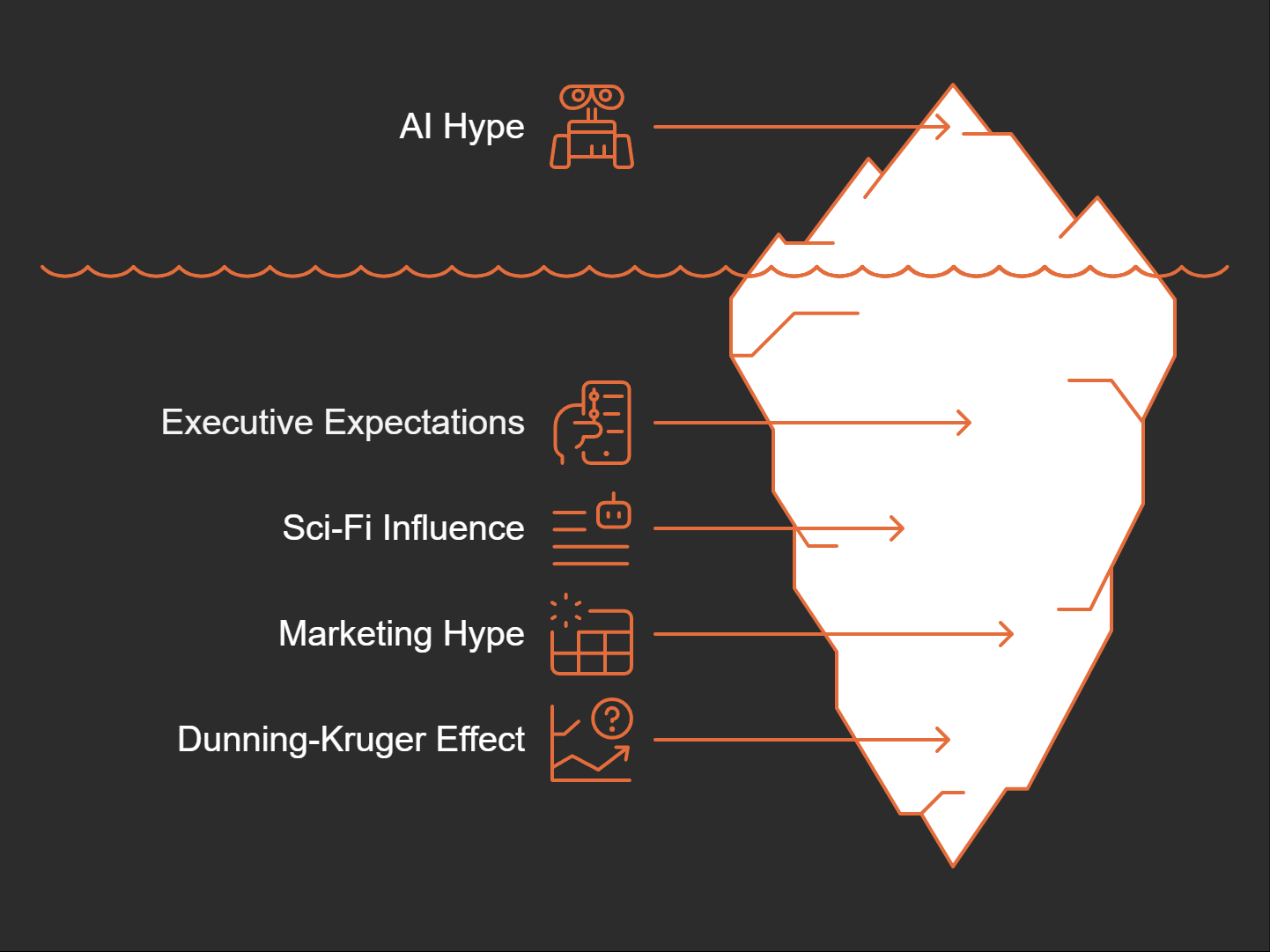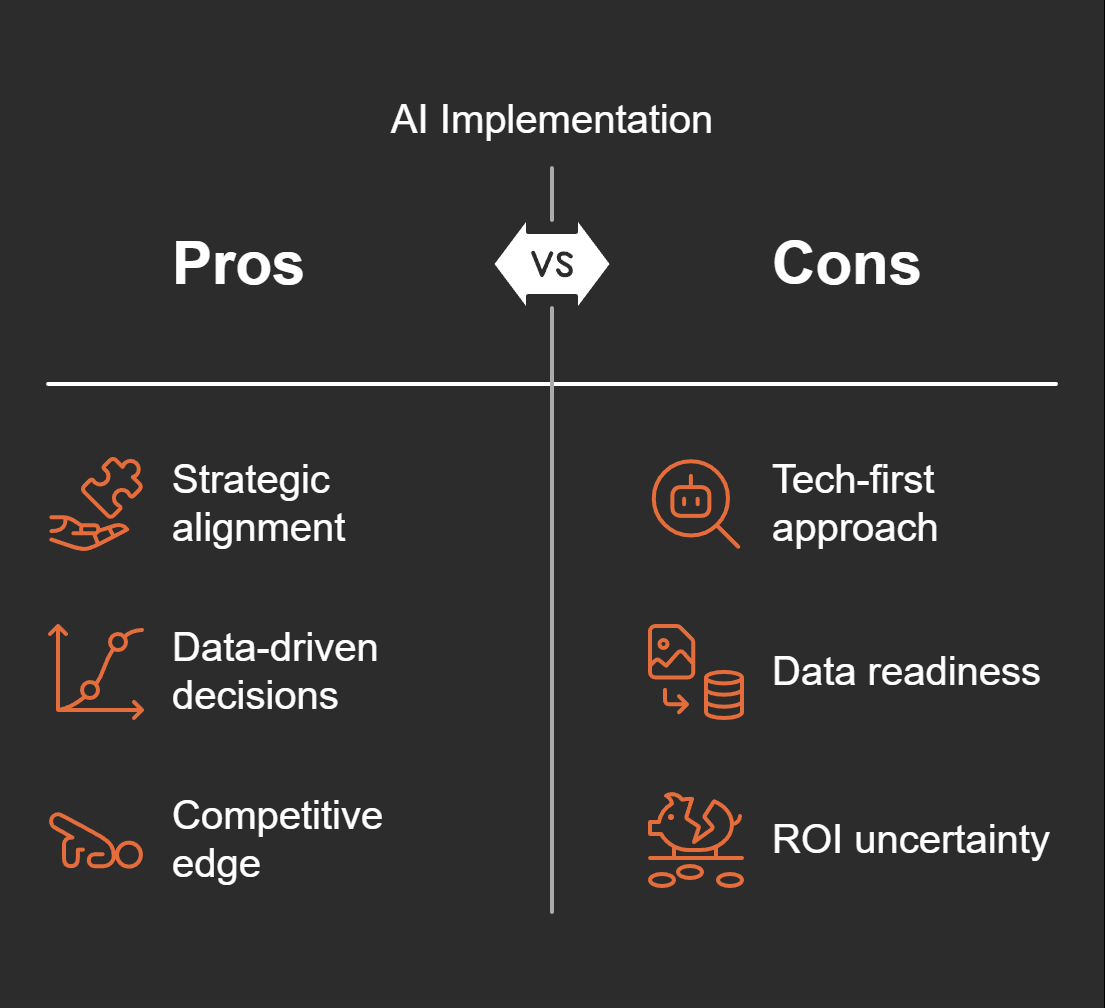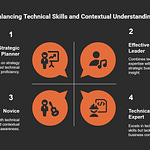A few years ago, I spent an entire week buried in a windowless conference room, wrestling quarterly data into something our CEO wouldn't immediately toss in the recycling bin. By Friday afternoon, my mind felt like overcooked spaghetti. Had you told me then that an AI could finish the same job in under an hour—maybe even noticing patterns my caffeine-soaked brain completely missed? I'd have laughed in your face. Yet here we are: AI is no longer a sci-fi sidebar—it's reshaping how we work, think, and compete. But here's the messy truth no one tells you: success with AI isn't about the tech—it's about leadership, culture, and seeing through the smoke and mirrors. Let’s pull back the curtain and unpack what MIT's George Westerman calls the true leadership challenge of AI (with a few embarrassing war stories along the way).
The Grinding Reality: Where Data Analysis Goes to Die (and How AI Can Help)
I still remember those nights. Bloodshot eyes staring at endless Excel sheets, the office eerily quiet except for the hum of my computer and occasional sighs. Another weekend sacrificed to the data gods. Another family dinner missed.
Sound familiar?
The Manual Data Wasteland
I'm not alone in this data purgatory. Financial teams across industries waste 40+ hours monthly just compiling reports. That's an entire workweek lost to data gathering rather than actual analysis! And the worst part? By the time these reports reach decision-makers, the insights are often shallow and outdated.
Marketing departments aren't immune either. I've watched talented marketers spend days analyzing campaign performance data that AI could process in minutes. The same tragedy repeats in supply chain management, where humans manually review inventory and make forecasts based on limited patterns they personally recognize.
The Hidden Cost of Human-Only Analysis
The real tragedy isn't just time lost. It's the insights we never see.
A manufacturing client of mine stubbornly clung to manual quality control reviews for years. Their defect rates remained mysteriously high despite endless analysis.
When they finally implemented an AI powered analysis system, it immediately identified subtle correlations... connections that had remained hidden for years despite dedicated analysis.
The AI discovered that particular supplier materials performed poorly under specific temperature conditions - something the team had completely missed. This single insight saved them $2 million annually and reduced defects by a staggering 23%.
Beyond Speed: The Competitive Edge
Speed alone isn't the whole story, tho it helps. The real advantage comes from:
Uncovering hidden patterns humans miss
Making faster strategic pivots
Deploying resources more effectively
As Mokrian notes with his "digital divide" concept - the more organizations invest in AI analytics, the wider the performance gap grows between them and competitors still stuck in manual processes.
The question isn't whether your industry will be transformed by AI-powered analysis. It's whether you'll be among the transformers or the transformed.
And trust me, as someone who's spent countless sleepless nights drowning in spreadsheets, there's a clear winner in that scenario.
Burnout, Blind Spots, and the Things No Dashboard Tells You
Let me tell you what's really happening behind those pristine dashboards and impressive charts. I've seen it firsthand: brilliant analysts with specialized degrees and years of experience spending their days... copying, pasting, and cleaning spreadsheets.
Eighty percent. That's how much of their time these talented people waste on mind-numbing data prep rather than solving the complex problems they were hired to tackle.
The Human Cost We Don't Discuss
I watched one of our best data scientists quit last month. Why? Not for more money, but because she couldn't bear another day of Excel gymnastics when she should have been building predictive models.
This burnout isn't just an HR problem. It's a strategic catastrophe. The people walking out your door are precisely the ones with both technical skills and domain knowledge—a combination that takes years to develop.
Leadership's Blind Spots
What keeps me up at night isn't just the talent drain, but what happens at the top. When executives only see what's easy to measure and compile manually, they develop dangerous blind spots.
I call it "strategic blindness." It's when your retail team misses an entire customer segment because nobody could analyze enough behavioral data by hand to spot the pattern.
This happened to a client last year. Only after automating their customer behavior analysis did they discover a high-value segment that had been completely invisible to their manual methods. This single insight increased their quarterly revenue by 12%.
The AI Implementation Reality Check
But here's where I need to be brutally honest: AI isn't a magic wand. Despite all the slick vendor presentations:
"According to recent studies, between seventy, eighty five percent of AI projects failed to deliver their expected value."
I've witnessed too many companies throw millions at AI without first understanding what problem they're trying to solve. They focus on acquiring shiny technology rather than business transformation.
The root causes aren't technological—they're strategic. Companies jump into implementation without asking fundamental questions about what they're trying to achieve.
The truth is both sobering and hopeful. When we address the human elements—the burnout, the strategic blindness, the lack of clear purpose—we set the stage for AI success. But when we ignore these messy realities, we're just adding another expensive failure to the statistics.
Expectation vs. Reality: Narrow AI Isn't Going to Clean Your Closet
I've seen it too many times to count. The executive strides into the meeting room, eyes glinting with excitement about the new AI initiative that's going to revolutionize everything. "It's going to optimize our supply chain, personalize customer experiences, and maybe make coffee while it's at it!"
Sigh. Here we go again.
The Sci-Fi Oracle Myth
Let's get something straight: that all-knowing, all-seeing "Super AI" from your favorite sci-fi movie? It doesn't exist. Not even close. Yet I've watched countless executives treat AI like it's some kind of digital oracle with unlimited powers.
The reality check we desperately need comes down to this:
"Narrow AI, which represents all commercially available AI solutions today, excels at specific well defined tasks within clear parameters."
Roomba ≠ Rosie the Robot
Think about your Roomba. It vacuums floors pretty well, right? But ask it to organize your closet or do your taxes, and you'll be waiting a long time. That's narrow AI - good at one specific job within strict boundaries.
What executives often imagine is more like Rosie from The Jetsons - a generally intelligent entity that can handle any task thrown its way. That's still science fiction, folks.
Marketing Hype: The Great Deceiver
Why the confusion? Well, when every product is labeled "smart," "intelligent," or "cognitive," what are people supposed to think?
Your "smart" fridge isn't contemplating the meaning of life
Your "intelligent" thermostat doesn't have an IQ
Your "cognitive" security system isn't having deep thoughts
The Dunning-Kruger AI Effect
I've noticed something fascinating: the people who know the least about AI often have the most confidence about what it can do. Classic Dunning-Kruger effect in action!
This creates the perfect storm. Executives with limited technical understanding climb to the peak of "Mount Stupid," launching wildly ambitious AI projects... only to come crashing down when reality hits.
What AI Actually Is
Strip away the hype, and AI is simply a branch of computer science focused on creating narrowly intelligent machines. Period.
The capability gap between expectations and reality is the number one reason AI projects fail. Not because the technology is bad, but because we expected magic when science was what we actually bought.
Next time someone tells you AI will solve all your problems, maybe ask if it can clean your closet first. The answer will tell you everything you need to know.
The Alpha Illusion: Why True Competitive Advantage Isn't What You Think
I'm going to let you in on a little secret that most AI vendors don't want you to hear: that shiny new AI platform won't save your business. Shocking, I know.
When I first encountered Pedro Morcrian's concept of "data-driven alpha," it clicked for me immediately. As an analyst who's seen countless tech initiatives fail, this framework explains exactly why.
What's This "Alpha" Thing Anyway?
In finance, "alpha" is the excess return above what's expected - basically your competitive edge. Morcrian brilliantly borrowed this concept for business AI.
But here's the twist: this alpha isn't about having the fanciest algorithms.
The key insight from Mokrian is that this alpha doesn't come from having the most advanced algorithms. Rather, it emerges from having the right data strategy, choosing appropriate analytical approaches for specific business problems, and implementing these solutions on suitable technical platforms, all in service of clearly defined business objectives.
Wait, so you're telling me it's not about the tech? Mind. Blown.
The Real Winners Ask Better Questions
I've seen this play out countless times. Company A chases the latest AI trend while Company B focuses on a specific business problem and gets their data house in order.
Guess who wins?
I once worked with a retail client who implemented a "boring" inventory system that gave them hourly insights while their competitors were still doing quarterly reporting. Game over.
The Boring (But Vital) Foundation of Success
The successful organizations I've observed follow this unsexy sequence:
Problem first: Identify a specific business challenge worth solving
Data check: Assess if you have the right data (and if it's clean enough)
Tech last: Only then choose the appropriate tech solution
Most companies do this backward! They buy fancy AI tools, then scramble to find problems and data to feed them. I've been guilty of this too.
The Hard Truth
If your AI project isn't tied to a clear business problem and usable data, forget about ROI. You might as well set your money on fire - at least that would generate some heat.
The companies generating real alpha aren't necessarily the ones with the biggest AI budgets or the most PhDs. They're the ones who've done the unsexy groundwork of defining problems and preparing their data.
So before you sign that contract for the latest AI platform, ask yourself: do we have a clear business problem and the right data strategy? Because that's where the real competitive advantage lies.
Stool Sample: The Three-Legged Model to Save You from the AI Hype
I've seen it happen countless times. A company spends millions on the shiniest new AI tool, only to watch it collect digital dust. Why? Because they overlooked Pedro Morcrian's brilliantly simple "three-legged stool" framework.
The Three Legs You Can't Ignore
Imagine buying a $5,000 espresso machine, but you have dirty water and unreliable electricity. Ridiculous, right? Yet companies do this with AI every day.
Morcrian's model identifies three critical components that must be stable for AI success:
Data: The quality, quantity, and relevance of your information
Algorithms: The computational methods that process your data
Platforms: The technical infrastructure that runs everything
The three legged stool metaphor is especially apt because like an actual stool, if any leg is weak or missing, the entire structure becomes unstable.
This isn't just theoretical. I've watched projects crumble because executives were hypnotized by algorithmic promises while ignoring catastrophic data quality issues. That's like expecting gourmet coffee from grounds you found in your vacuum cleaner bag.
Why We Keep Getting This Wrong
Most businesses get seduced by algorithms first—they're exciting, they make great PowerPoint slides, and vendors sell them aggressively. Meanwhile, the unglamorous work of data preparation and platform readiness gets pushed aside.
No wonder so much money gets wasted!
A Framework for Non-Technical Leaders
Look, I'm not an engineer. I'm a business person who's learned the hard way. What I love about this model is that you don't need to understand neural networks or tensor calculus to use it effectively. It's a leadership tool, not a wizard's spellbook.
Your Practical AI Checklist:
Define the actual business problem (not the tech solution)
Audit your data quality and accessibility
Evaluate your platform readiness
Then select the appropriate algorithm/technology
Skip any step, and you might as well toss your budget into a digital shredder.
I've seen this framework demystify AI implementation for executives who previously felt lost in technical jargon. It provides that reality check we desperately need amid the AI hype cycle.
Remember: a stool needs all three legs. Get them right, and you'll have something solid to stand on.
Wild Card #1: My Worst Ever 'AI Miracle' Pitch Meeting (And Why I'm Still Cringing)
I still get that sinking feeling in my stomach when I think about it. Three years ago, sitting in our company's glass-walled conference room, sweating through my dress shirt as a vendor confidently declared their AI solution would "solve all our KPI challenges in one fell swoop."
The Pitch That Crashed and Burned
Picture this: our executive team, notebooks open, leaning forward expectantly as the vendor flashed impressive charts across the screen. I'd invited them in after weeks of hype and promises.
"This AI system will revolutionize your entire operation," they beamed. "It's basically magic."
My first red flag? They couldn't explain how the system actually worked. When our CTO asked about data requirements, the answer was vague: "It just needs access to everything."
Things really went off the rails during the demo. Their "game-changing" platform crashed twice. When pressed on specific use cases for our industry, they pivoted to generic success stories that sounded suspiciously rehearsed.
The room's energy shifted. I noticed our CFO's increasingly furrowed brow. Side glances between team members. Then came the uncomfortable silence when the vendor finished with a flourish and an eye-watering price tag.
The Aftermath
Despite my growing doubts, I pushed forward with a pilot. Big mistake. Six months and considerable investment later, we had nothing to show but confused teams and data that was more muddled than when we started.
My credibility took a serious hit. I became "that guy who fell for the AI snake oil."
What I Wish I'd Known
Looking back, I should have applied what experts like Pedro Morcrian call the "three-legged stool" framework:
Starting with a specific business problem, not technology
Assessing our data readiness honestly
Evaluating if AI was even the right solution
Had I asked those basic questions, we would have saved months of lost time and considerable budget.
The Silver Lining
That spectacular failure changed my approach forever. Now when vendors throw around AI buzzwords, I'm the first to ask uncomfortable questions. What specific problem does this solve? What data is required? Can you show me exactly how it works?
I've developed a healthy skepticism that's actually accelerated our genuine digital transformation—because now we focus on solving real business problems rather than chasing shiny AI promises.
Sometimes the most valuable lessons come from our most cringe-worthy moments. At least that's what I tell myself while trying to forget those painful boardroom stares.
Wild Card #2: If AI Was a Sous-Chef—A Creative Analogy
I've been thinking about this AI thing lately. And you know what? Sometimes the best way to understand complex tech is through something we all get—like cooking.
The Kitchen Metaphor
Picture this: Your data is basically your pantry. It's all the ingredients you've collected over time. Some fresh, some... well, let's just say they've been sitting there since last Christmas.
Your algorithms? They're your kitchen tools. The fancy food processor, the reliable chef's knife, that weird gadget your mother-in-law gave you that you're still figuring out.
And the platform? That's your actual kitchen—the physical space where magic happens (or disasters unfold).
Even Gordon Ramsay Can't Save a Messy Kitchen
Here's the thing I learned the hard way: Even the world's best chef can't create a memorable dish if your pantry is empty, your tools are broken, or your kitchen's a disaster zone.
I once tried implementing an AI solution when our data was scattered across seventeen different systems. It was like asking someone to make a soufflé when the eggs are in the basement, the flour is in the attic, and half the ingredients are missing entirely.
The result? A very expensive digital pancake. Flat and disappointing.
Going Gourmet with AI
Your pantry (data) needs organization. Know what you have, where it is, and whether it's still good.
Your tools (algorithms) should match what you're trying to cook. You don't need a pasta maker for a salad.
Your kitchen (platform) must be clean, functional, and set up for the specific meals you plan to create.
When I started treating our AI projects like preparing for a dinner party—organizing ingredients first, selecting appropriate tools, and ensuring the kitchen could handle the workload—suddenly things started working.
Reality Check
Are you rushing to implement AI because it's trendy? That's like buying a sous-vide machine when you don't know how to boil water.
Remember: Organize your pantry and clean your kitchen first—or risk serving up digital disaster.
I've seen companies invest millions in AI platforms while neglecting their messy, incomplete data. It's like spending a fortune on a professional-grade kitchen when your pantry contains nothing but expired condiments and half-eaten bags of chips.
Doesn't matter how fancy your stove is if you have nothing decent to cook.
Conclusion: The Beautiful Messiness of AI – And Why That's Okay
You know what? After all my rambling about frameworks, case studies, and transformation zones, I've come to accept something important: AI in business will always be a work in progress. And that's actually perfect.
I used to beat myself up when projects didn't go exactly as planned. That manufacturing client whose AI system initially misclassified 30% of defects? I lost sleep over it. But here's what I've learned—those "failures" weren't failures at all. They were tuition payments for real learning.
The messy middle is where the magic happens.
Embracing Beautiful Imperfection
Leaders who embrace imperfection are the ones seeing the greatest returns from AI. They understand something crucial that took me years to learn: perfection is the enemy of progress.
I think of Sarah Chen, who pivoted when her expensive AI platform flopped. Instead of doubling down on a bad investment (which many of us would do to save face), she recalibrated. She accepted the wobble in her three-legged stool and adjusted.
The result? A 30% reduction in routine workloads within three months. Not because she got everything right the first time, but because she wasn't afraid to get things wrong.
The Real Leadership Challenge
As Westerman's law reminds us, "Technology changes quickly, but organizations change much more slowly." This is where your real work begins.
It's not about the algorithms or even the data—though both matter enormously. It's about creating environments where experimentation isn't punished, where quick learning cycles replace perfect planning, and where employees feel like participants rather than victims of change.
Success with AI means more progress, less perfectionism, and heaps of humility.
Your Turn to Wobble
So here's my final call to action: try the three-legged stool approach. Start with a clear business problem. Assess your data. Choose appropriate algorithms and platforms.
But please, don't be afraid to wobble along the way. Recalibrate when needed. Laugh at yourself when things go sideways (trust me, they will).
Remember my AI necessity test? Not every problem needs AI. Sometimes a simple rules-based approach works just fine. That's not failure—it's wisdom.
The organizations winning with AI aren't the ones with the most advanced technology. They're the ones brave enough to be imperfect, human, and perpetually learning.
In the end, AI isn't about perfection—it's about progress. And progress, with all its beautiful messiness, is more than enough.



